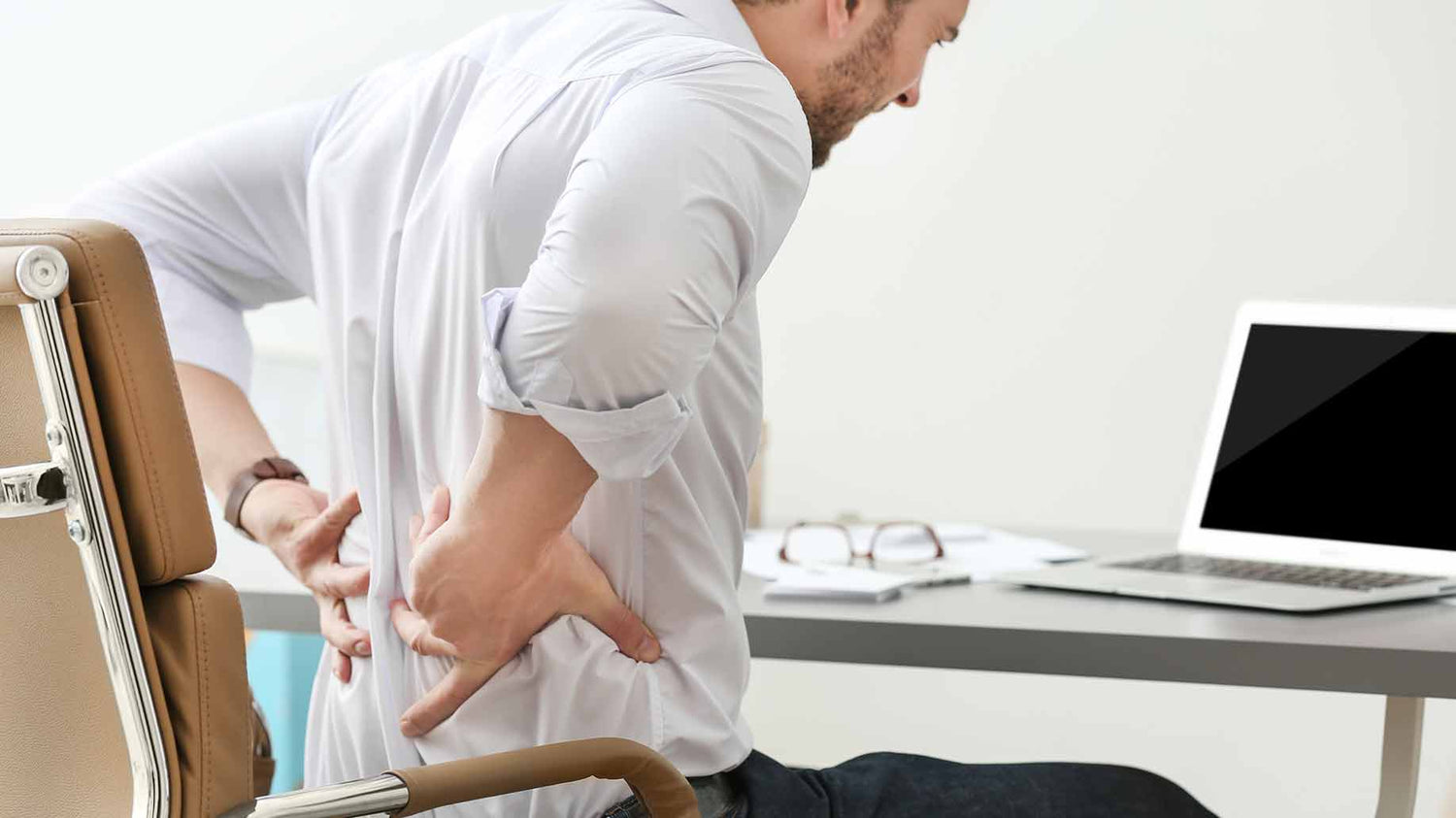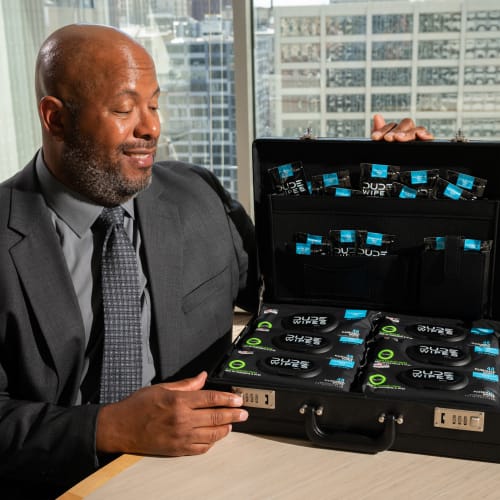Bored as you might be, there are some undeniable benefits to working a desk job: no hard labor, instant access to the internet to break up the monotony, and minimal risk of death, just to name a few.
But if you earn a living while sitting on your ass, there’s a chance you’re afflicted with a problem you might not even know you have: dead butt syndrome, also known as DBS.
Dead butt syndrome means your butt muscles are tight and weak—most likely from sitting too much. It’s a legit medical condition that’s tough to fix, especially if you spend most of your day in a chair.
Luckily, there’s hope. In this article, we’ll teach you how to beat dead butt syndrome without quitting your desk job (and build some muscle along the way). But first, let’s take a closer look at the details of DBS.
What Is Dead Butt Syndrome?
Dead butt syndrome is a slang term for a medical condition where your gluteal muscles become elongated and weak, like a worn-out rubber band. It’s also called gluteal amnesia or gluteus medius tendinopathy.
The most common culprit of dead butt syndrome is a sedentary lifestyle where you sit all day. Over time, this causes a muscle imbalance where your gluteal muscles lengthen and your hip flexors shorten. This creates a tug of war around your midsection and prevents your butt muscles from activating correctly—hence the term “dead” butt.
“Our bodies aren’t designed to be seated for long periods of time,” says Kristen Schuyten, D.P.T., a physical therapist at Michigan Medicine. “So if you’re on your butt for hours a day, it’s going to lead to issues.”
Dead butt syndrome isn’t an “injury” but rather a chronic issue that develops over time.
Why Does It Matter If Your Butt Is Dead?
Alright, so you don’t have buns of steel—who cares? It’s not like you’re training for the Olympics. True as that may be, dead butt syndrome creates problems that have nothing to do with aesthetics.
Lower back pain is one of the most common symptoms associated with DBS. People often think the problem stems from the back itself, but it’s actually weak glute muscles that are forcing the back to overcompensate.
It’s also common to experience hip pain and knee pain since DBS can throw your gait out of whack. DBS can even trigger shooting pain down the legs and lower back, similar to how sciatica feels.
It might sound like a stretch (no pun intended), but waking up your butt could be the solution to your pesky aches and pains.
4 Exercises to Fix Dead Butt Syndrome
Unlike other physical ailments, the fix for dead butt syndrome is more activity—not less. You can see a chiropractor or try physical therapy, but in most cases, you can fix DBS on your own.
Here are four exercises that will literally wake your ass up from its deep sleep. Just remember to warm up beforehand—the last thing you need is a dead butt that’s also injured.
1. Glute Bridges
- Lie down on your back.
- With your shoulders flat on the floor and both knees bent at 90 degrees, lift your hips toward the ceiling.
- Squeeze your butt muscles and hold for five seconds.
- Lower your hips back down to the floor.
2. Squats
- Stand with your feet hip-width apart.
- Brace your core muscles
- Slowly bend your knees until your quads are parallel to the floor
- Return to the starting position and squeeze your glutes when you get to the top
3. Clamshells
- Lie down on your right side with both knees bent at a 45-degree angle
- Keeping your heels touching, raise your left knee toward the ceiling
- After ten reps, repeat with the opposite side
- If these get too easy, place a resistance band around your knees
4. Lunges
- Stand with your feet shoulder-width apart
- Step forward with your right leg, bending your knees to 90 degrees as you lower yourself
- Don’t let your rear knee touch the ground
- Push off with your front leg and return to the starting position
- Repeat with your left leg
2 Tips to Prevent Dead Butt Syndrome
Assuming you keep up with your exercises a few times per week, here are three daily habits you can incorporate to spare yourself from DBS.
1. Use a Standing DeskStanding while you work is an easy way to combat DBS without adding anything new to your routine. A study by the CDC found that using a standing desk for just four weeks reduced back and neck pain by 54%.
You don’t need to stand for eight hours a day, but changing positions every hour or so can make a big difference.
2. Take Frequent BreaksDon’t have a spot to work standing up? No excuses—set a timer on your phone to get up once every hour throughout the day.
Fill your water bottle. Walk up and down the stairs. Bother a coworker. Whatever you do, it’s better for your butt than sitting until it’s quitting time.
What’s Worse Than a Dead Butt? A Dirty Butt
People are sitting so much that scientists are literally calling it a public health crisis. As if that wasn’t bad enough, millions of those people are sitting on butts that are smeared with fecal residue and chapped from dry toilet paper.
The human ass is facing dire circumstances. And while we can’t force you to get a standing desk or bang out a set of squats, we can supply you with soothing flushable wipes to keep your dead butt clean.
DUDE Wipes are for any butt—dead or alive.


















